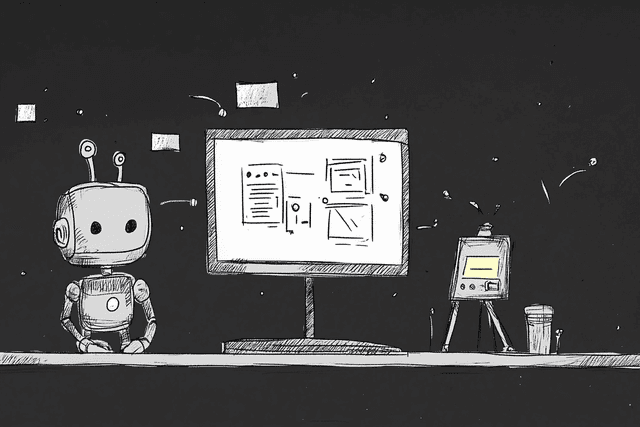AI is becoming a common part of software testing workflows. Whether automating test case generation or identifying regression risks, teams are experimenting with ways to use AI to reduce manual effort and improve accuracy.
Many developers and QA engineers are beginning to explore AI-powered testing tools for the first time. Some are working under budget constraints; others are trying to streamline test coverage without increasing complexity. In both cases, free tools offer a low-risk entry point. The global AI-enabled testing market is projected to grow from USD 856.7 million in 2024 to USD 3,824.0 million by 2032, reflecting a compound annual growth rate of 20.9%.
This article provides an overview of free AI testing tools, how they work, and how to evaluate them. It also explains how AI is changing the nature of software testing.
What Are AI Testing Tools?
AI testing tools use artificial intelligence and machine learning to automate parts of the software testing process. These tools can generate test cases, identify UI elements, adapt to application changes, and analyze test results without human intervention.
Unlike traditional testing frameworks that rely on fixed scripts, AI testing tools can learn from patterns in your application and testing history. This learning capability helps them handle variations in the user interface, predict likely failure points, and suggest test coverage improvements.
The main types of AI testing tools include:
Visual testing tools: Use computer vision to detect UI changes and rendering issues
Self-healing test frameworks: Automatically update test scripts when small UI changes occur
Test generation systems: Create test cases based on application behavior or requirements
Test analytics platforms: Identify patterns in test failures and suggest improvements
Traditional test automation requires engineers to write and maintain scripts that verify application behavior. When the application changes, these scripts often break and need manual updates. However, machine learning algorithms in testing have reduced manual scripting efforts by 70%, while self-healing mechanisms automatically update test scripts when UI elements change, slashing maintenance time by 40%. This maintenance burden can slow down development and reduce confidence in test results.
How AI Is Changing Software Testing
Some key ways AI is transforming testing include: A multinational bank implemented Eggplant AI to automate testing for its mobile banking app, achieving 91% test coverage (up from 34%) within nine months while decreasing false positives by 60%.
When evaluating free AI testing tools, certain features make a bigger difference in day-to-day testing work. Understanding these capabilities helps you choose tools that match your team's needs. A 2024 survey revealed only 16% of companies rate their current testing methods as 'efficient,' while 24% of organizations lack dedicated teams for AI testing.
Some key ways AI is transforming testing include:
Reduced test maintenance: Self-healing tests can adapt to small UI changes without manual updates
Improved test coverage: AI can identify untested scenarios and suggest new test cases
Faster test execution: Intelligence-driven test prioritization focuses on high-risk areas
Better defect detection: Visual AI can catch subtle UI issues traditional tests might miss
Teams using AI testing tools often report spending less time maintaining tests and more time on exploratory testing and feature development. This shift helps address the common complaint that test maintenance becomes a bottleneck in fast-moving projects.
Key Features to Look for in Free AI Testing Tools
When evaluating free AI testing tools, certain features make a bigger difference in day-to-day testing work. Understanding these capabilities helps you choose tools that match your team's needs.
Automated Test Generation
AI-powered test generation creates test cases without requiring manual scripting. These systems analyze your application to identify common user paths and critical functionality.
The best tools in this category can:
Create test cases based on user behavior recordings
Generate tests from written requirements or user stories
Suggest test coverage improvements based on code changes
This capability is particularly valuable for teams with limited testing resources or those facing tight deadlines.
Self-Healing Test Capabilities
Self-healing tests automatically adapt when minor changes occur in the application. This reduces false failures and maintenance overhead.
When evaluating self-healing features, look for:
The ability to recognize elements even when their properties change
Smart waiting mechanisms that adjust to application timing
Clear reporting on what elements changed and how the test adapted
Tools with strong self-healing capabilities can significantly reduce the time spent updating tests after UI changes.
Visual Validation
AI-powered visual testing goes beyond traditional element checks to verify that applications look correct. These tools use computer vision to detect visual regressions.
Effective visual validation features include:
Automatic detection of visual differences between builds
Smart ignoring of expected or irrelevant changes
Visual comparison across different browsers and screen sizes
Visual testing helps catch layout issues, rendering problems, and other visual bugs that functional tests might miss.
CI/CD Integration
For continuous testing to work effectively, AI testing tools need to integrate with your development pipeline. Look for tools that connect with your existing CI/CD systems.
Important integration points include:
Support for popular CI platforms like GitHub Actions, Jenkins, or CircleCI
The ability to run tests automatically on code changes
Reporting mechanisms that feed results back to developers
Good integration makes it easier to run tests consistently and address issues quickly.
Top 10 Free AI Testing Tools
Here are ten free AI testing tools that can help improve your testing process without requiring a budget commitment.
1. Applitools Eyes Free Tier
Applitools Eyes is a visual AI testing platform that detects visual bugs by comparing screenshots. The free tier includes:
Up to 100 free visual tests per month
Visual AI comparison for catching layout issues
Integration with major testing frameworks
Support for web, mobile, and desktop applications
Applitools excels at detecting subtle visual differences that would be difficult to catch with traditional testing methods.
2. Testim Community Edition
Testim offers AI-powered test automation with smart element locators. Their community edition provides:
Unlimited tests for a single project
AI-powered element selectors that reduce test flakiness
Record-and-playback functionality with smart editing
Chrome extension for easy test creation
Testim's AI helps tests remain stable even when UI elements change position or properties.
3. Mabl Free Edition
Mabl provides low-code test automation with AI capabilities. Their free edition includes:
1,000 test runs per month
Automated self-healing for tests
Visual testing capabilities
Integration with common development tools
Mabl is particularly good for teams looking for an easy entry point into AI testing without requiring extensive coding skills.
4. Functionize Free Trial
Functionize uses AI to create and maintain tests from plain English descriptions. Their extended free trial offers:
Natural language test creation
Self-healing test execution
Root cause analysis for test failures
Cloud-based execution environment
Functionize is useful for teams who want to write tests in natural language rather than code.
5. Test.ai Community Edition
Test.ai focuses on mobile application testing using AI. Their community edition provides:
AI-driven element recognition for mobile apps
Test generation based on application analysis
Support for both Android and iOS testing
Integration with common CI tools
Test.ai is particularly valuable for mobile app testing where UI elements frequently change.
6. Autify Free Trial
Autify offers no-code test automation with AI capabilities. Their free trial includes:
Scenario recording without coding
AI-powered element recognition
Test maintenance assistance
Cross-browser testing support
Autify works well for teams without dedicated test automation engineers.
7. ReTest Community Edition
ReTest provides AI-powered difference testing. Their community edition offers:
State-based testing rather than traditional assertions
AI to distinguish relevant from irrelevant changes
Integration with Java applications
Open-source core engine
ReTest takes a unique approach by focusing on overall application state rather than specific elements.
8. TestCraft Free Trial
TestCraft offers codeless Selenium test automation with AI. Their extended free trial includes:
Visual test creation without coding
AI-powered test maintenance
Selenium-compatible test execution
Integration with common testing tools
TestCraft is good for teams who want Selenium's power without its complexity.
9. Testsigma Community Edition
Testsigma provides test automation using natural language. Their community edition includes:
Tests written in plain English
AI-powered test maintenance
Support for web, mobile, and API testing
Cloud-based execution environment
Testsigma works well for teams who want to write tests in a language non-technical stakeholders can understand.
10. Rainforest QA Free Tier
Rainforest QA combines AI testing with human verification. Their free tier includes:
Visual test creation without coding
AI-assisted test execution
Integration with development workflows
Support for web applications
Rainforest QA is useful for teams who want to combine automated testing with human judgment.
How to Integrate Free AI Testing Tools into Your Workflow
Adding AI testing tools to your existing process requires thoughtful implementation. Here's how to get started:
1. Identify Testing Pain Points
Begin by identifying specific challenges in your current testing process:
Tests that frequently break due to UI changes
Areas with inadequate test coverage
Testing tasks that consume excessive time
Types of bugs that often slip through
Focusing on concrete problems helps you select tools that address your actual needs rather than chasing the latest technology.
2. Start with a Small Pilot Project
Rather than overhauling your entire testing approach, start with a small project:
Choose a non-critical application component
Set clear success criteria
Involve a small team of interested testers
Allow time for learning and adjustment
This approach reduces risk and helps you understand how AI testing works in your specific environment.
3. Integrate with Existing Tools
Look for ways to connect AI testing tools with your current development environment:
Set up integration with your source control system
Configure test runs as part of your CI pipeline
Feed results into your existing bug tracking system
Establish clear workflows for addressing AI-detected issues
Good integration makes AI testing part of your normal process rather than a separate activity.
4. Measure Impact and Adjust
Track specific metrics to understand the impact of AI testing tools:
Time spent maintaining tests
Number of false positives and negatives
Test coverage percentage
Defects found before production
Use these measurements to adjust your approach and decide whether to expand your use of AI testing.
Common Challenges with Free AI Testing Tools
While AI testing tools offer significant benefits, they also present challenges that teams should anticipate.
Learning Curve
AI testing tools often work differently from traditional testing frameworks. Teams may need time to understand concepts like:
How AI identifies elements in the application
When to trust automation versus manual verification
How to interpret AI-generated test results
Best practices for writing tests that work well with AI
Allocating time for learning and experimentation helps teams adapt to the new approach.
False Positives and Negatives
AI testing tools can sometimes produce misleading results:
False positives: Tests fail when the application is actually working correctly
False negatives: Tests pass despite actual defects in the application
These issues often occur when the AI misinterprets application changes or lacks context about business requirements.
Limited Scope in Free Versions
Free tiers of AI testing tools typically include limitations that may affect their usefulness:
Restricted number of test runs
Limited test case storage
Fewer supported browsers or devices
Basic reporting capabilities
Understanding these constraints helps set realistic expectations about what free tools can accomplish.
When to Consider Upgrading to Paid AI Testing Tools
Free AI testing tools can take you far, but certain situations may justify upgrading to paid versions:
Your team relies heavily on the tool for critical testing
You need advanced features not available in the free tier
Test volume exceeds free tier limitations
You require enterprise features like SSO or audit logging
Your team needs dedicated support or training
Many teams start with free tools to validate the approach, then upgrade selectively based on specific needs and demonstrated value.
How AI Testing Fits into a Comprehensive QA Strategy
AI testing tools work best as part of a balanced testing approach. They complement rather than replace other testing methods:
Unit tests: Verify individual components work correctly
Integration tests: Check that components work together
AI-powered tests: Handle UI validation and regression detection
Manual exploratory testing: Find issues that automated tests might miss
This balanced approach leverages AI where it excels while recognizing that some testing still benefits from human judgment.
Teams seeing the best results from AI testing typically maintain a mix of testing approaches, with AI handling repetitive validation while humans focus on exploratory testing and edge cases.
Getting Started with Free AI Testing Tools Today
If you're interested in exploring AI testing, here are practical steps to begin:
Select one tool from our list that aligns with your specific testing challenges
Sign up for the free tier and complete any available tutorials
Choose a small, non-critical part of your application for initial testing
Create a few test cases and run them regularly for several weeks
Evaluate the results in terms of time saved and issues found
This measured approach helps you understand the real benefits and limitations of AI testing in your specific context.
For teams dealing with flaky tests and test maintenance challenges, tools like Trunk Flaky Tests can complement AI testing by helping identify and manage unreliable tests in your existing test suite.






